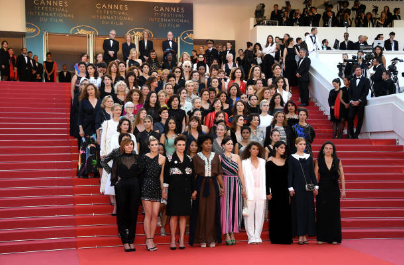Women and film festivals: Promises are easy, change is hard

After years of stubbornly deflecting criticisms of misogyny in its selection and programming processes, the traditionally staid Cannes Film Festival shuffled into the 21st century earlier this week when its representatives promised to become more gender inclusive. Signing a Programming Pledge for Parity and Inclusion in Cinema Festivals, they vowed to track and report the gender ratios of filmmakers submitting films for consideration, provide greater transparency regarding the composition of those included on selection and programming committees, and strive for greater gender parity on the executive board. Numerous media reports of the day’s activities breathlessly recounted the pronouncements made by movie stars and festival kings of a better day. While these types of red-carpet events provide the ample high-wattage glamour that has always distinguished the film industry, they also obfuscate the realities for most women working in the business.
The Cannes Film Festival has an abysmal record of screening films directed by women. In its most august competition, for the Palme d’Or, women have directed only 82 of the more than 1,600 films in the competition over the 71-year history of the festival. Women helmed only three of the 21 films (14 percent) chosen to vie for this year’s highest honor. When considering films across the festival’s programs — such as Un Certain Regard, Director’s Fortnight, Critics’ Week Competition — women directed approximately 20 percent of the feature-length films screened this year.
At high-profile festivals here in the United States, women fare a bit better, according to the latest Indie Women study conducted by the Center for the Study of Women in Television and Film. In 2017-18, women comprised 29 percent of directors working on independent, domestically produced films screening at the 23 well-known festivals considered in the study, such as the SXSW Film Festival, AFI Fest, and the Telluride Film Festival. This represents no change from 2016-17.
U.S. festivals screened almost three times as many narrative features directed by men as by women in 2017-18. The 23 festivals considered screened an average of 16 films directed by men, compared to an average of six films directed by at least one woman.
Women fared better on documentaries. Fests screened an average of 13 documentaries directed by men versus an average of eight documentaries directed by at least one woman.
The study also indicates that the inclusion of women directors is related to higher numbers of women working in other behind-the-scenes roles. Films with at least one woman director also had substantially higher percentages of women writers, editors, and cinematographers. On films with at least one female director, women comprised 71 percent of writers versus 8 percent on films directed exclusively by men, 47 percent versus 17 percent of editors, and 34 percent versus 7 percent of cinematographers.
In addition, those festivals with at least one woman who functions as the head of programming screened higher percentages of films with female directors (33 percent) and writers (30 percent) than festivals with exclusively male heads of programming. At these festivals, women comprised 24 percent of directors and 22 percent of writers.
It appears that as more women assume these gatekeeping positions as film directors and heads of programming at festivals, they will serve as a major corrective to the “woman problem” in the film industry. Contrary to the old sexist adage that women don’t hire or support other women, the body of research I have conducted over the last 20 years suggests the opposite.
While women do fare better on independent films screening at U.S. festivals than at Cannes, the fact remains that women remain sorely underemployed. Eighty-five percent of independent films produced in the U.S. had no women cinematographers, 77 percent had no women writers, 73 percent had no women editors, and 66 percent had no women directors.
The recent action taken by the artistic directors of the Cannes Film Festival is a step in the right direction, but it should be recognized for what it is, a promise of change. Only time will tell if the festival’s pledge will result in the inclusion of more films by women in its various programs, as well as in its most prestigious competition for the Palme d’Or. Promises are easy, change is hard.
More articles by Category: Media
More articles by Tag: Film, Equality



























